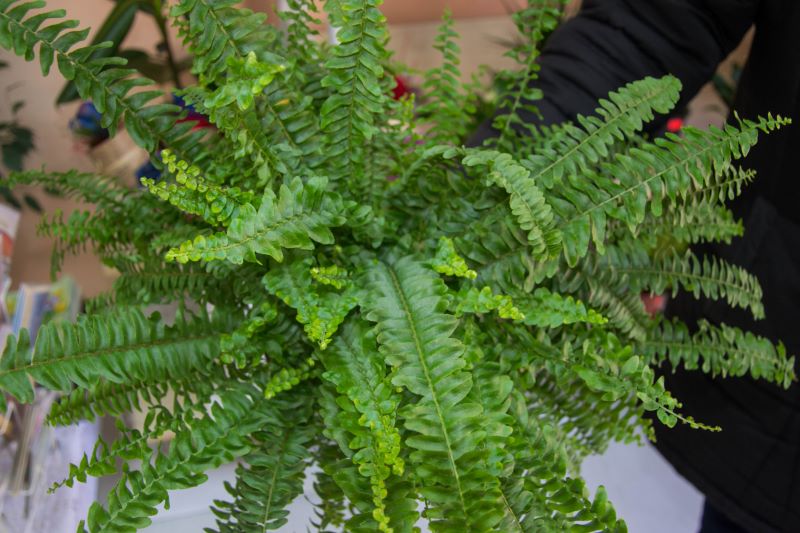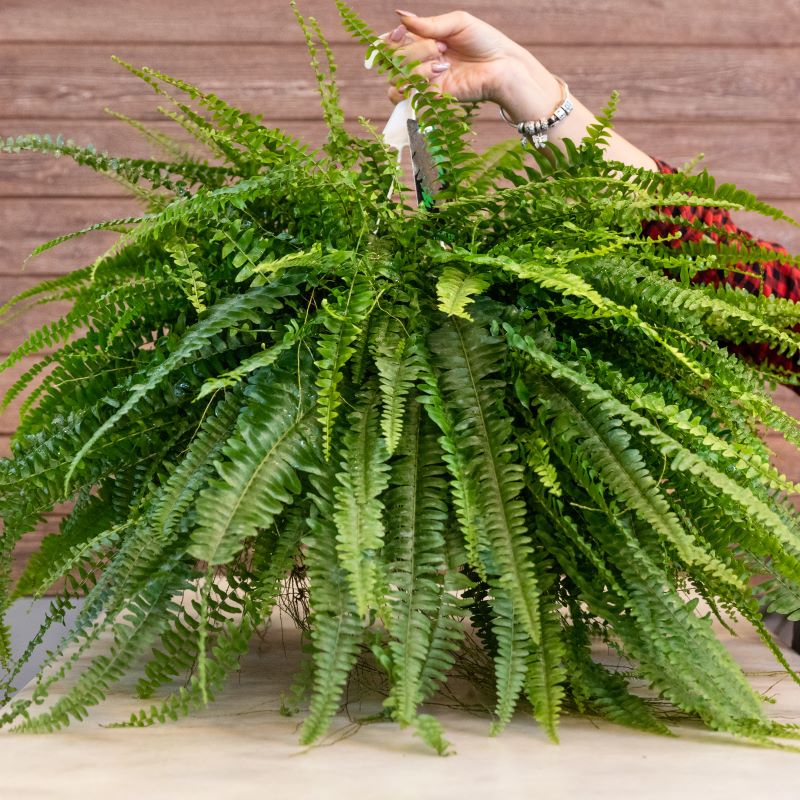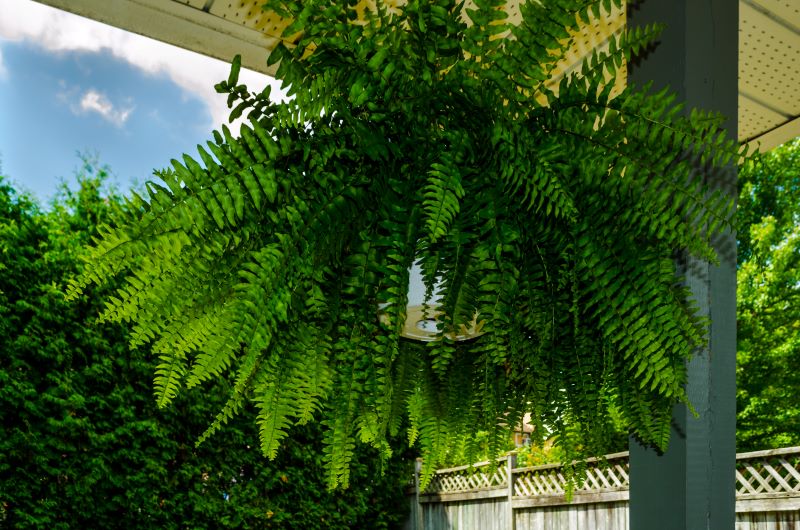Boston ferns are a popular decorative plant for outdoor patios and porches. However, they don’t survive the winter very well unless they are in a subtropical climate. If you live in a subtropical area, you might be able to leave your Boston fern outside for the winter and care for it as you usually would. However, if the winter temperatures in your area consistently drop below 75℉ during the day, you will need to learn more about Boston fern winter care and in addition to this article, our comprehensive Boston fern indoor care guide may be helpful.

Learning how to winter Boston ferns can save you some time and money in the long run. Rather than throwing your plant away at the end of each summer, you can help your plant survive the winter months and thrive again in the following spring and summer.
Wintering Boston ferns is a pretty easy process, but it does have some specific requirements. It requires that you provide the correct temperature, humidity, light, and water just as you would if it was outdoors. When Boston fern winter care is done correctly, it can stay just as pretty as when it’s outdoors.
Boston Ferns make a beautiful addition to any home with their long arching fronds. Great for pedestals or hanging baskets.
Boston ferns can grow to be rather large if they are grown in the right conditions. Mature plants can reach almost 3 feet in height. The leaves are long and bushy and can spread out up to 3 feet in width. In tropical climates where the fern is planted and left to grow outside year-round, it can even reach 8 feet in height with leaves up to 9 feet long. However, this is extremely rare in non-tropical climates or when the fern is grown in a pot at home. If you live in a climate that requires specific Boston fern winter care, it will likely grow to be a medium-sized houseplant.
The leaves tend to spill over the edge of the pot in a traditional fern shape. Each individual leaf can grow to 2-3 feet in length with smaller leaflets spanning the leaf. It can be grown in a pot on the ground or in a hanging pot. Either way, it makes for a great decorative fern. Learning to winter Boston ferns ensures that you can continue to enjoy your plant regardless of the temperature.
Boston Fern Care Guide
Light
Since Boston ferns are naturally a low-lying plant, they require plenty of indirect sunlight. If you leave them outside, make sure that they’re in a spot where they will get some sun, but ideally, have the sun filtered through tree leaves or similar. If you are bringing the plant indoors for the winter, finding the correct amount of light in your house is extremely important. To winter Boston ferns indoors, place them near a window. If possible, a south-facing window without any barriers is perfect.
Water
This type of fern should never be left in dry soil. The soil should consistently be damp to ensure that the roots don’t dry out.
If you are planning to winter Boston ferns indoors, you will likely need to ensure you have a good watering regime, and perhaps water it a little more often, so that the soil doesn’t dry out.

Temperature and Humidity
Humidity is very important, especially when wintering Boston ferns indoors. When they don’t get enough humidity, the leaves start to turn yellow and then die. Most home heaters make the house extra dry, so you will likely need to add additional humidity to the room where the lpant is located. You may need a small humidifier to help keep the humidity up. You can also spray it with a mist of water a few times a week to help keep the leaves moist.
Boston ferns do best when kept in temperatures around 75℉ during the day and a little cooler overnight. If you plan to keep the house temperatures above 75℉ during the day in the winter, you may need to just let the plant go dormant over the winter. When home heaters run enough to keep the temperature that warm, the plant will dry out too much.
Good Boston fern winter care can include letting the plant go dormant. When dormant, the plant won’t grow, but it also won’t die. Then you can revive it in the spring and help it start growing again. To encourage a Boston fern to go dormant, place it in a cool dark room – like a garage or unfinished basement – and keep the temperature around 55℉. Continue to water the plant, but don’t water it as often as you normally would. You might still need to mist the leaves every few days to keep the humidity at the right level.
Fertilizer
If you are wintering Boston ferns, don’t fertilize them during the winter. Once you move them back outside in the spring, return tofertilizing them as usual following our Boston fern care guide.
Pruning
When preparing for wintering Boston ferns, plan to prune the leaves. If you bring the plant indoors for the winter without doing any pruning, the leaves can die and create a mess. Prune all but the newest leaves before bringing the plant indoors for the winter. This will save you some clean-up later.
Problems With Wintering Boston Ferns
The primary problem that occurs when wintering Boston ferns is letting them dry out. These ferns need to have damp soil and enough humidity in order to stay alive when kept indoors.
Also, when transitioning the plant from outdoors to indoors for the winter, give it time to adjust. Don’t abruptly change its environment. Too quick of a change can cause the leaves to start dying and make it difficult for the plant to survive. Bring it indoors before the weather gets too cold.

Do’s & Dont’s For Successful Boston Fern Winter Care
Do’s
- Keep the humidity high
- Let it go dormant if need be
- Water it regularly
Don’ts
- Let it dry out
- Move it inside too suddenly
- Let it get too cold

Our Summary of Wintering Boston Ferns
If you would like your Boston fern to survive cold winter temperatures so you can continue to enjoy it in future seasons, it’s important to learn how to winter Boston ferns with care. Wintering Boston ferns isn’t especially difficult, but the plant does require specific conditions in order to thrive.
The primary considerations are temperature, humidity, water, and sunlight. This fern is naturally a low-growing tropical plant, so it does well in somewhat warm, humid conditions with indirect sunlight. If you provide the correct conditions for wintering your Boston fern well indoors, it will survive the winter and continue to thrive in the following spring and summer months.




